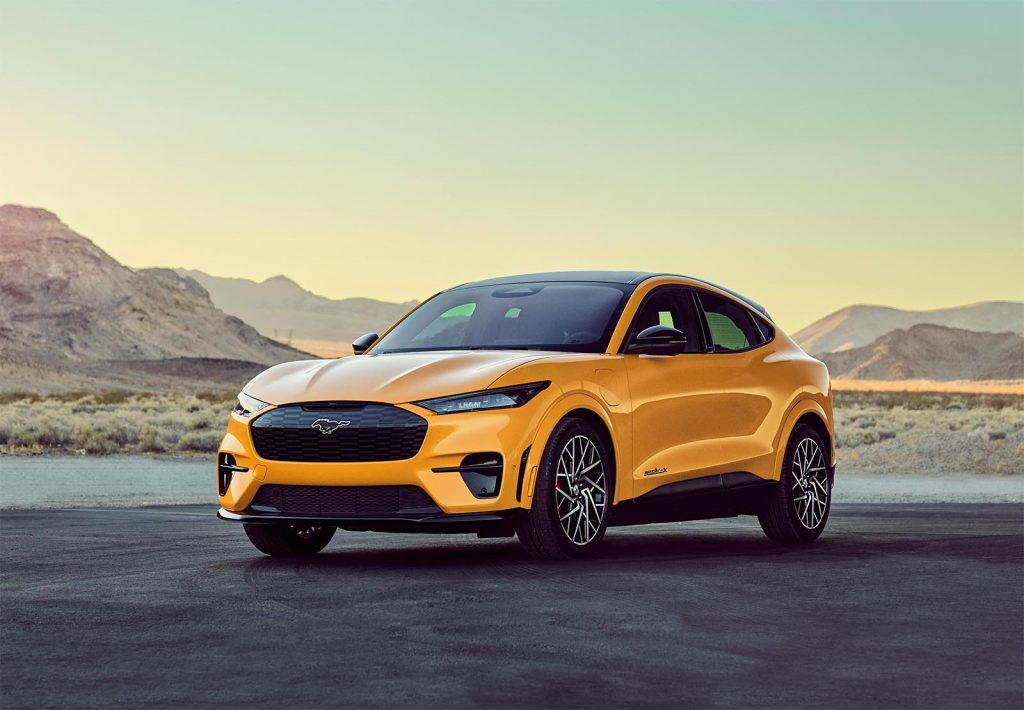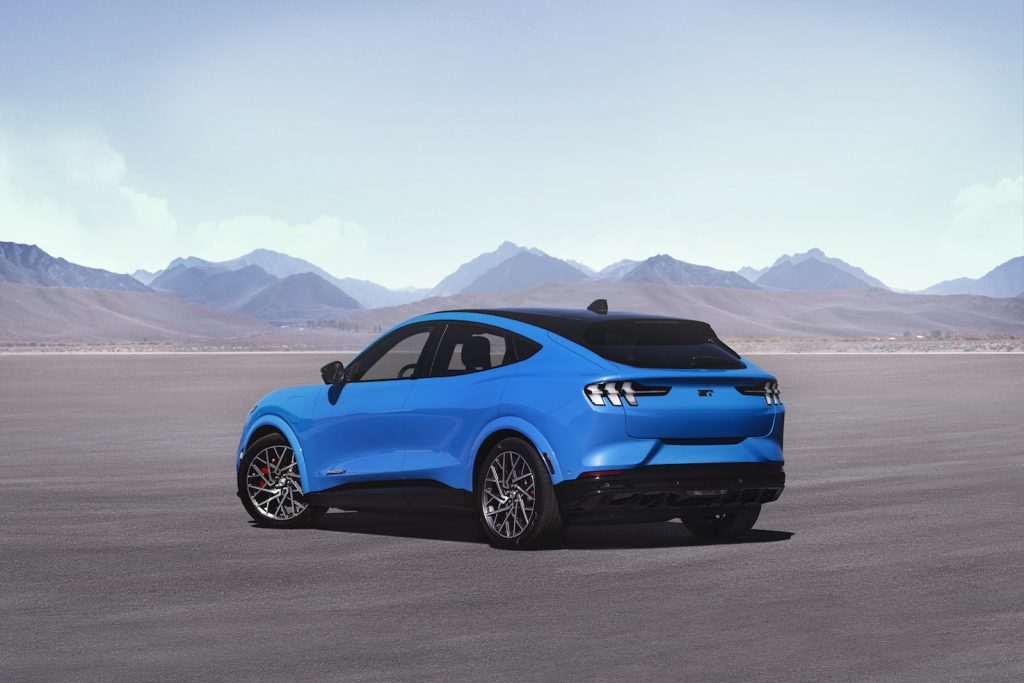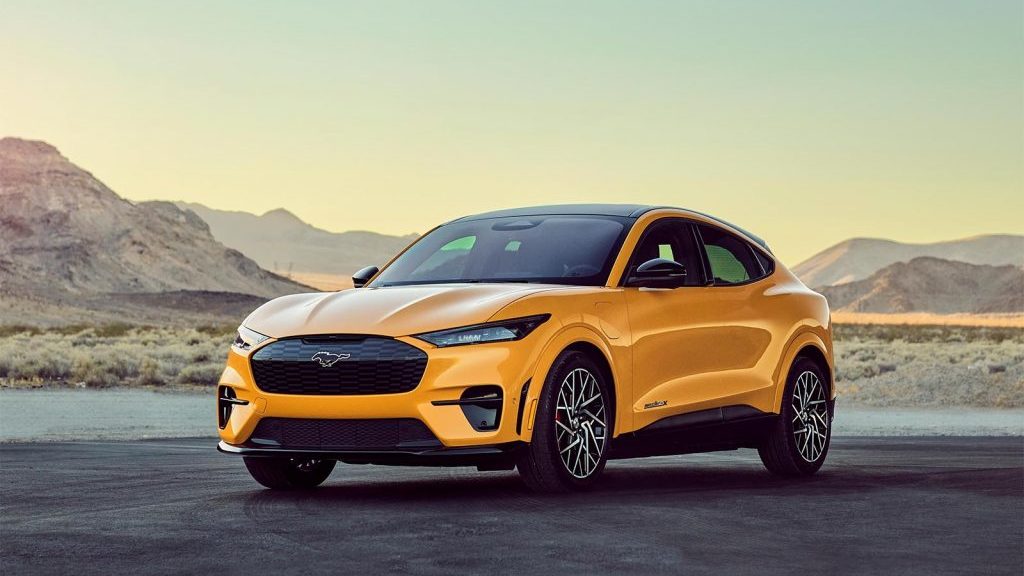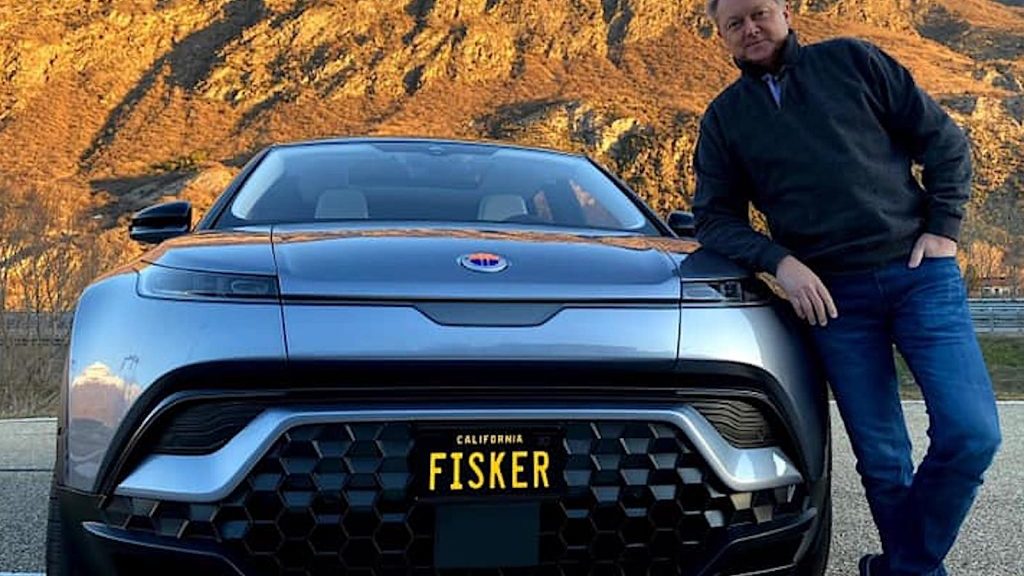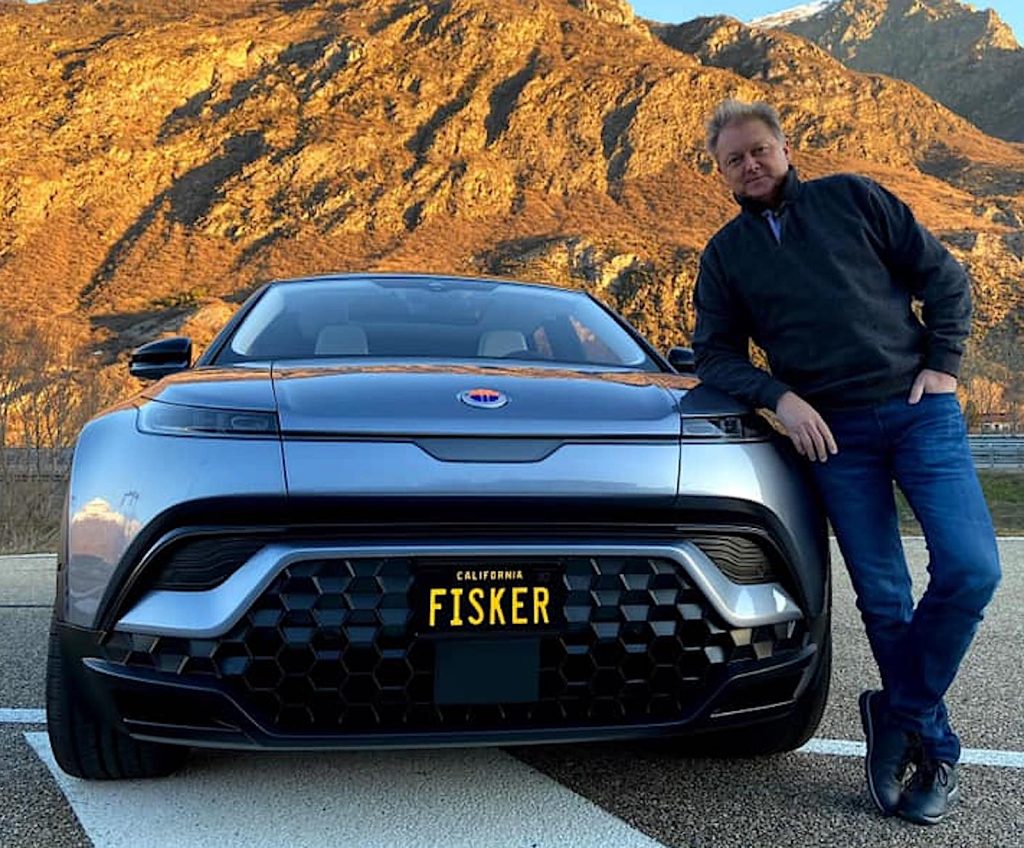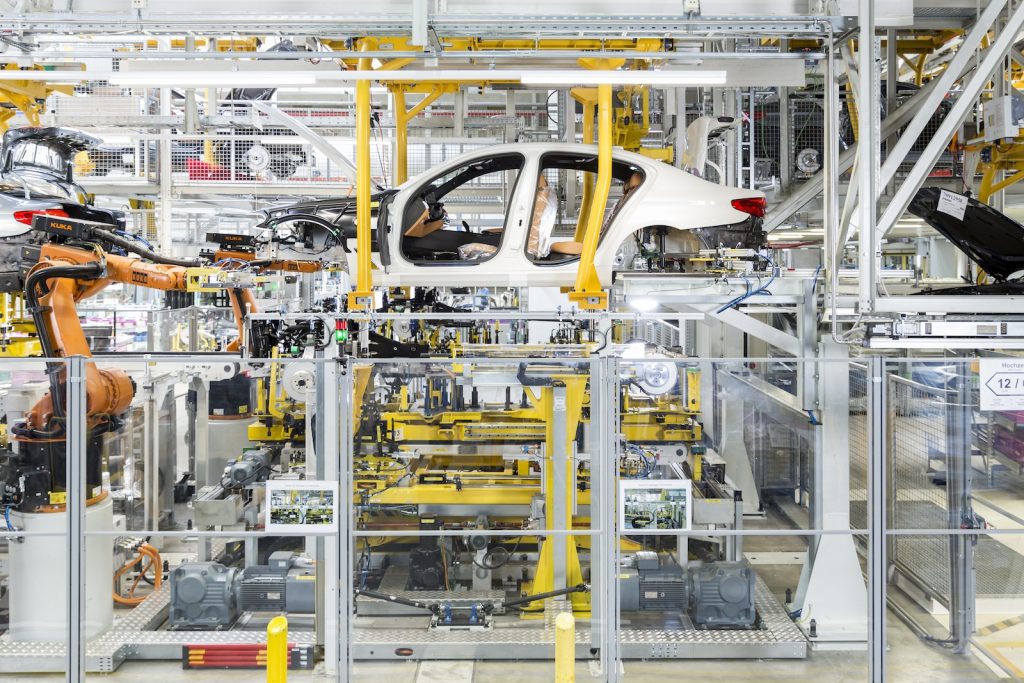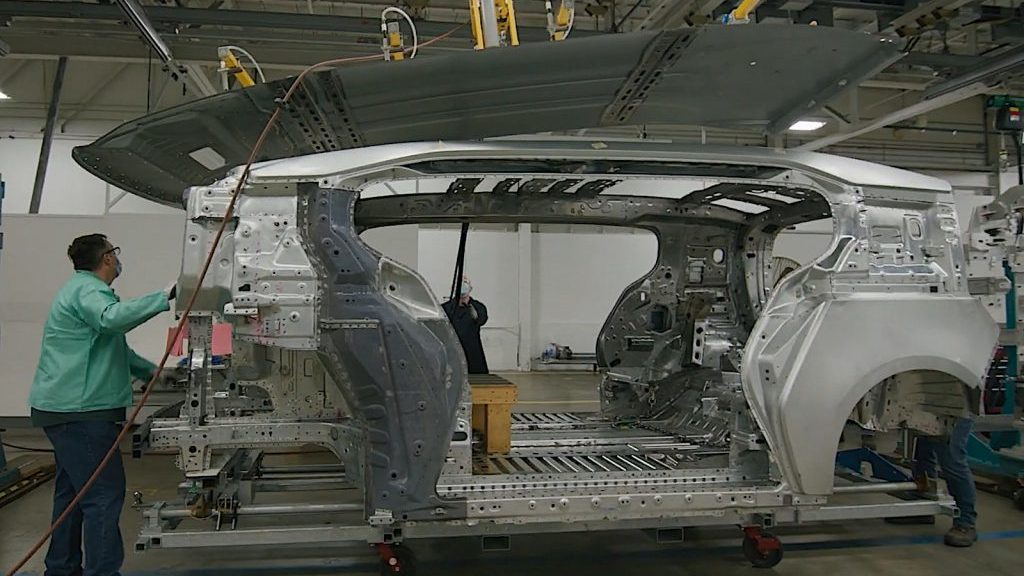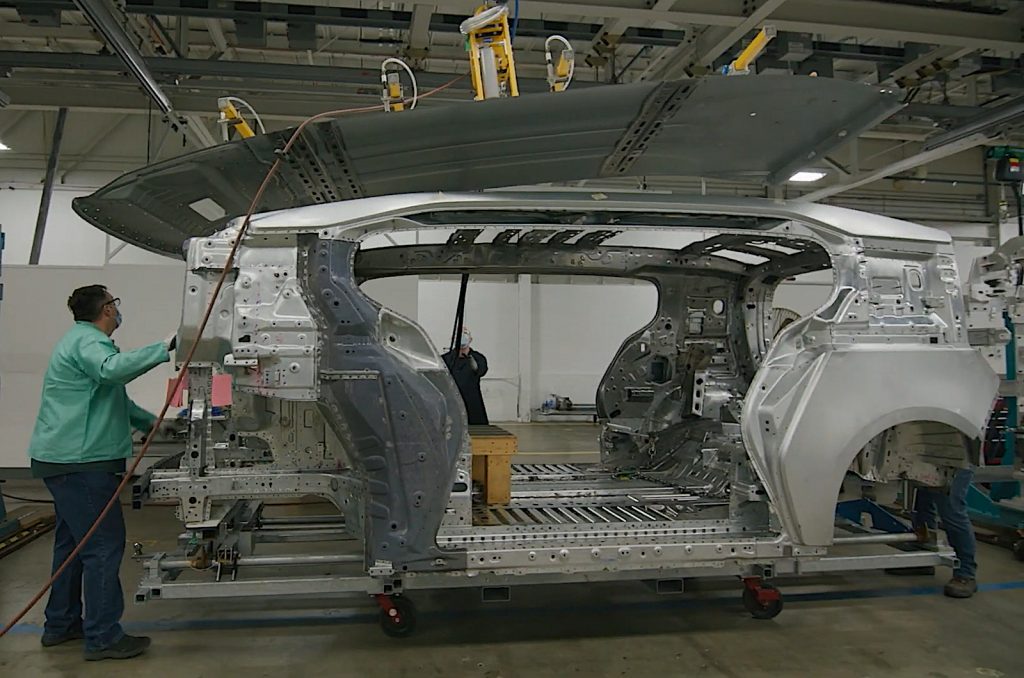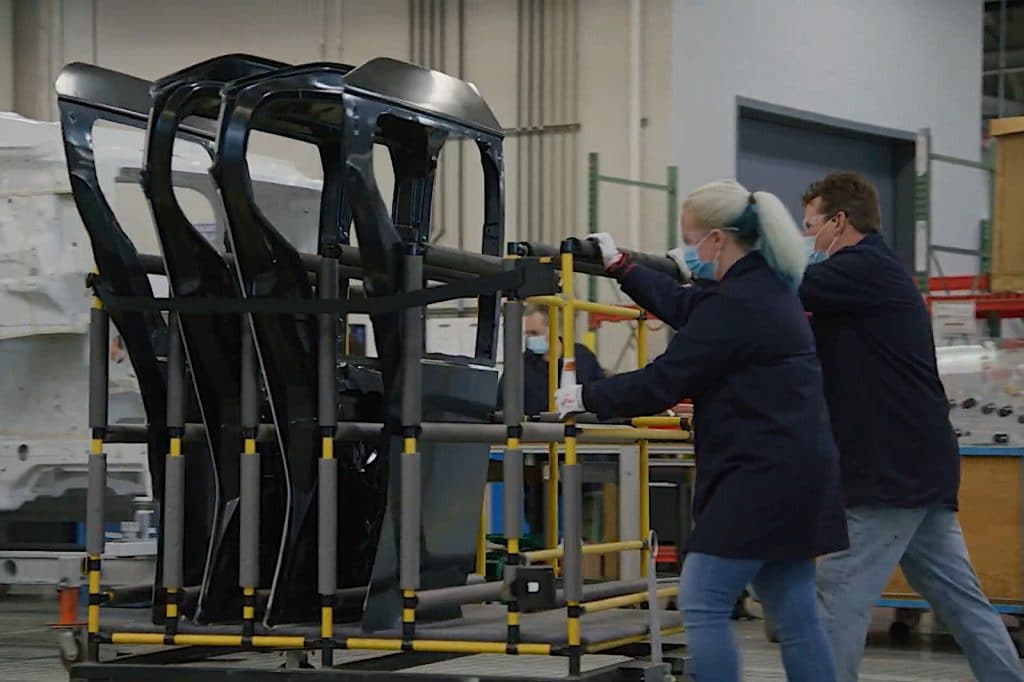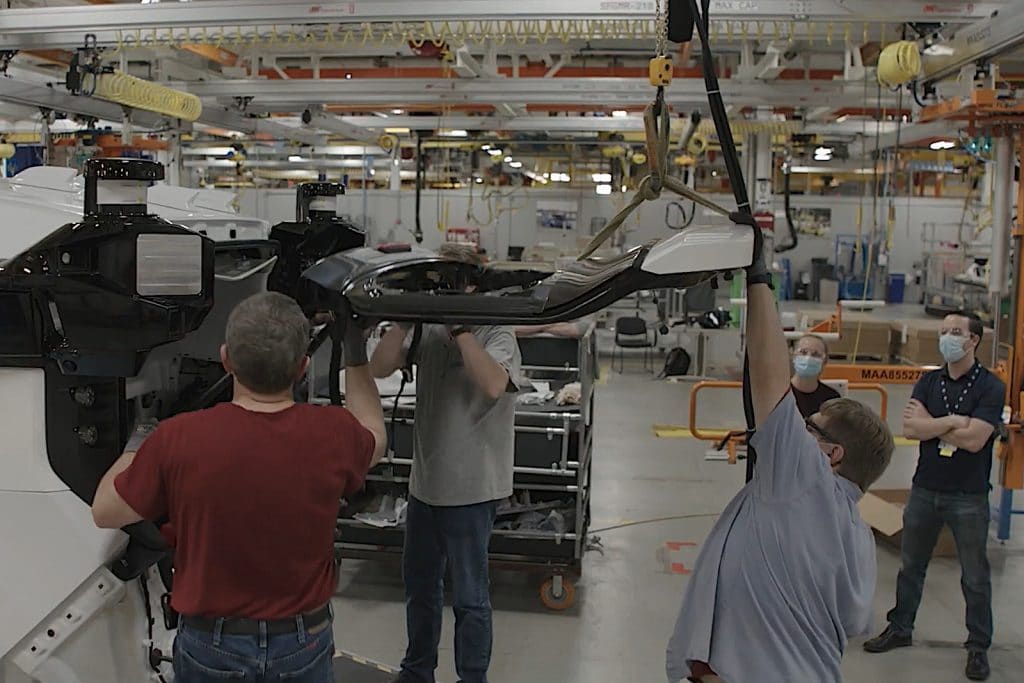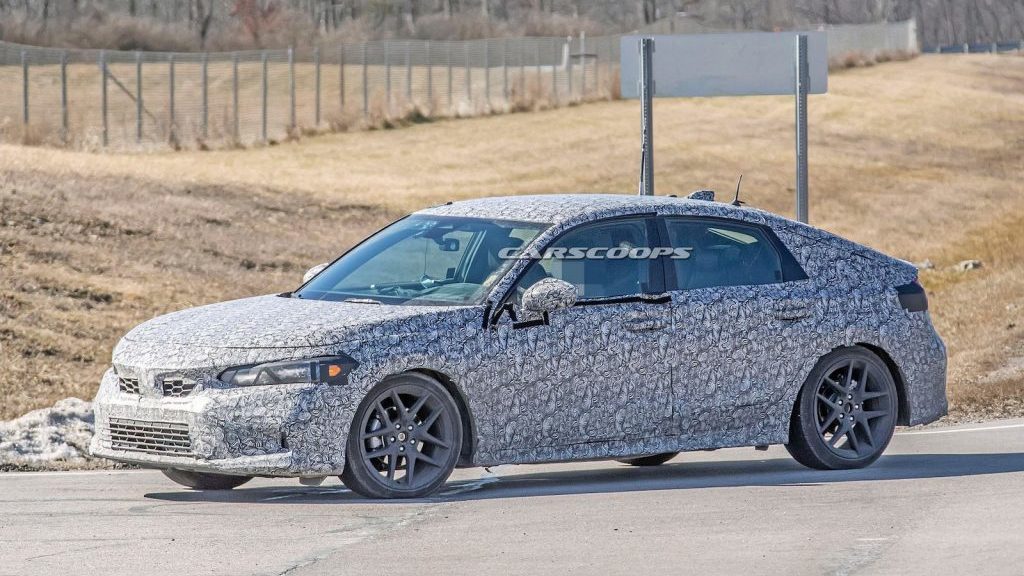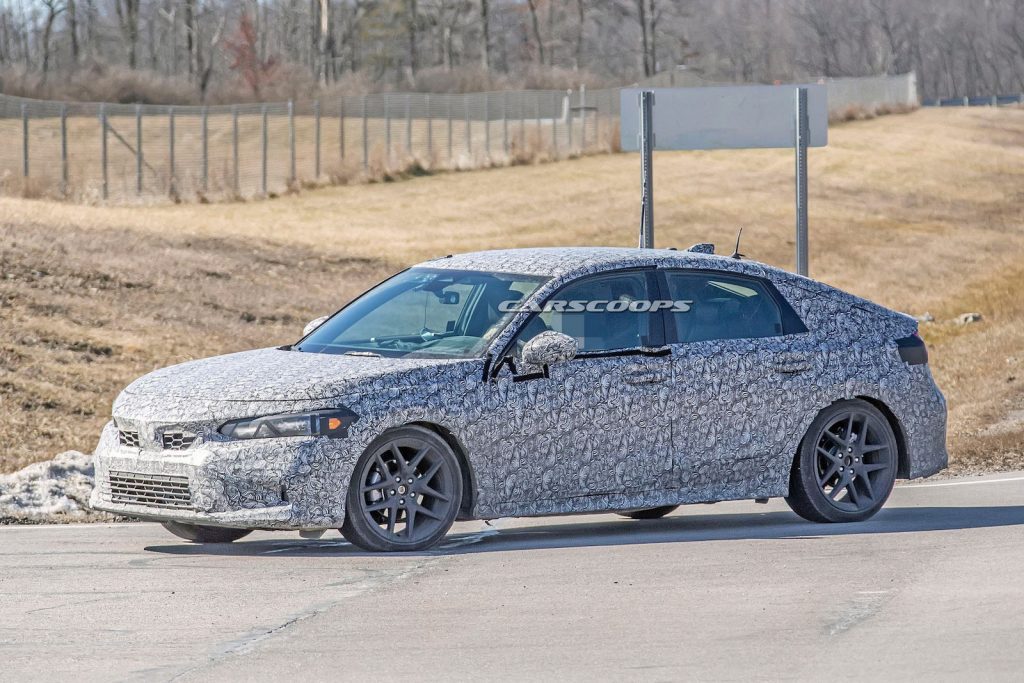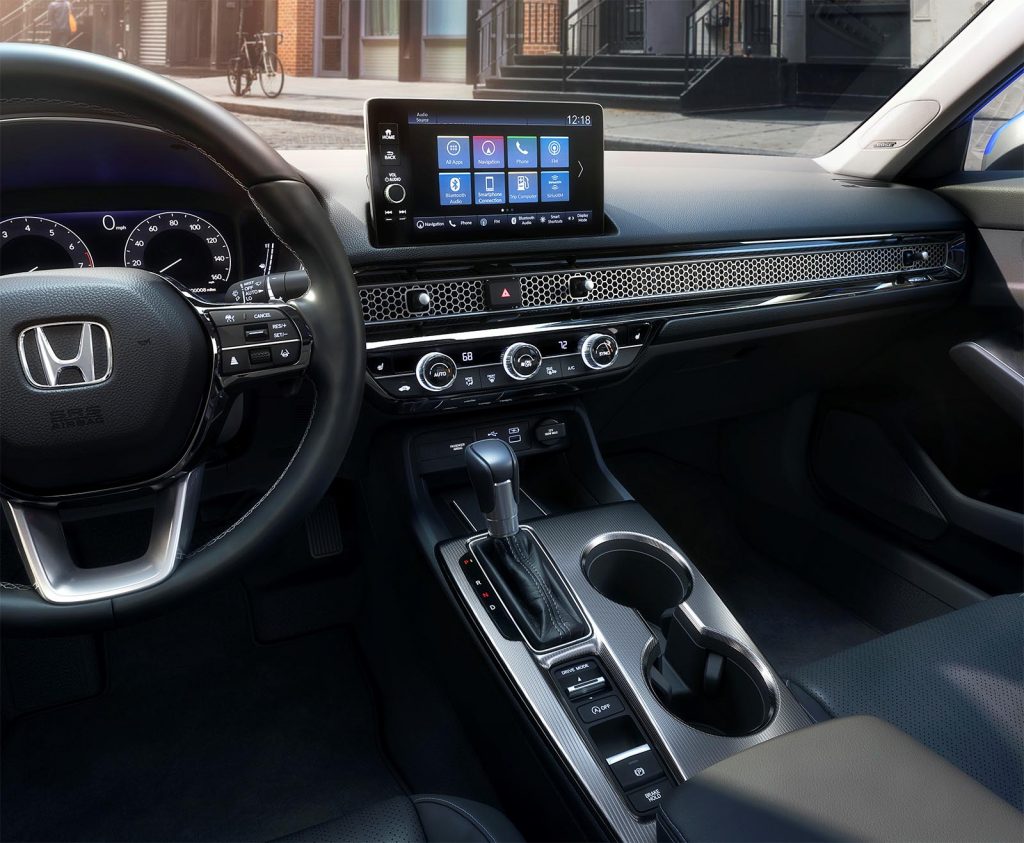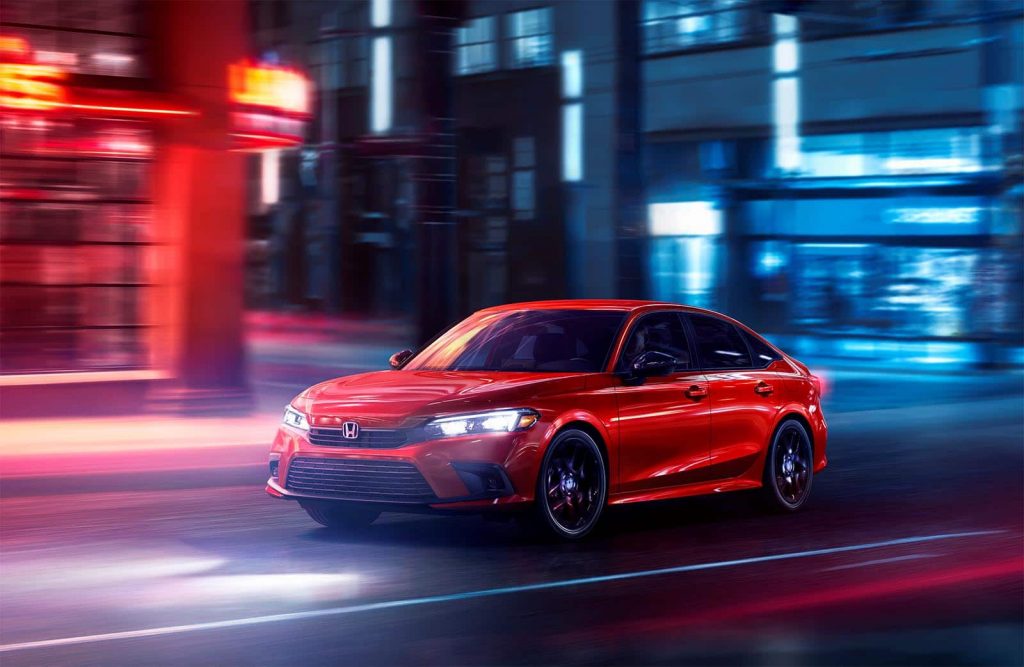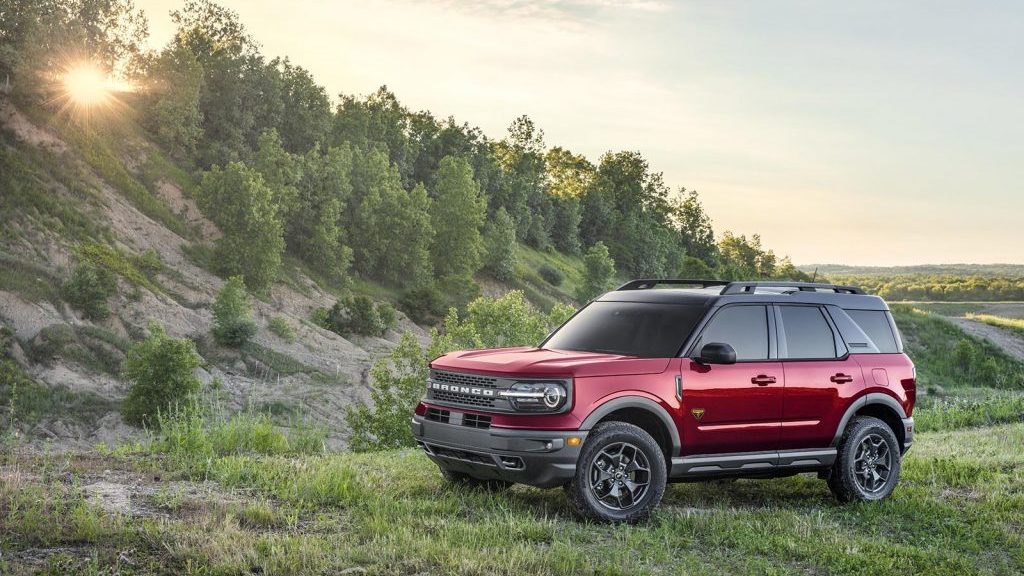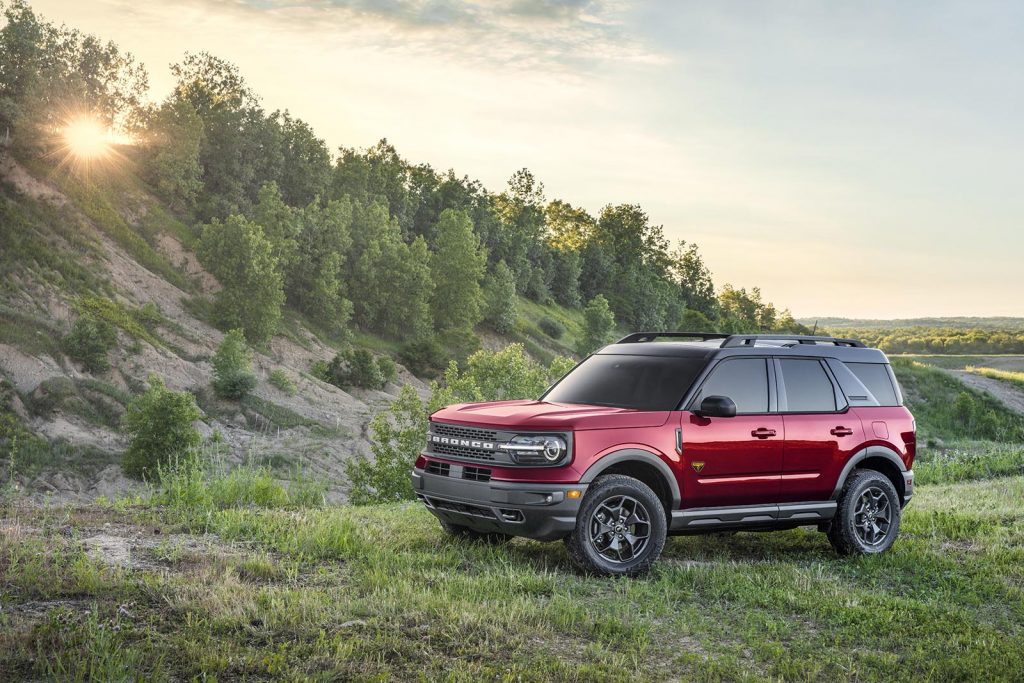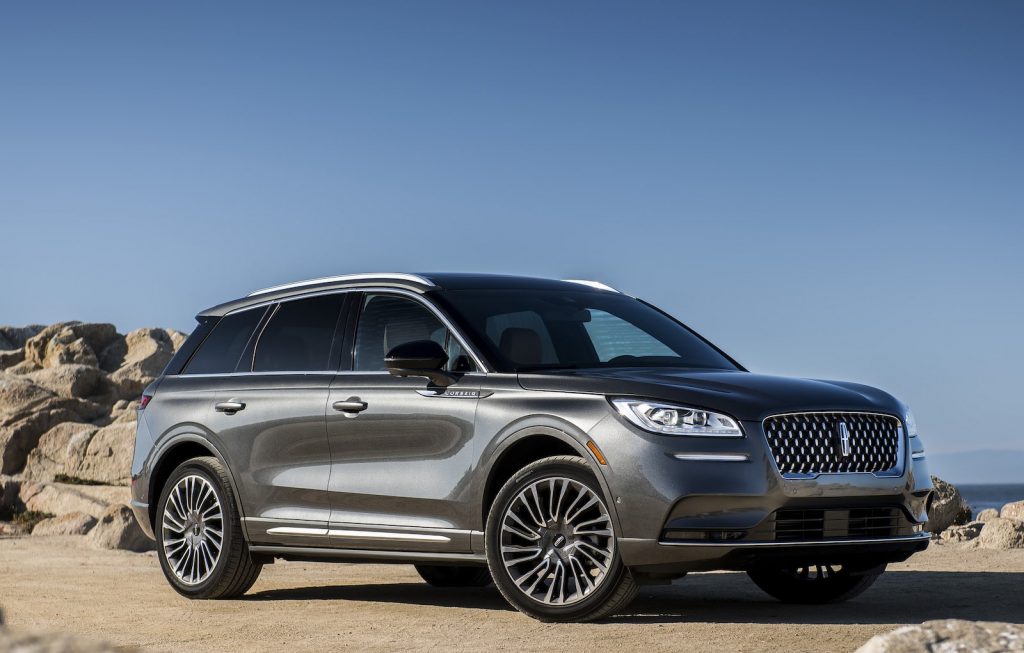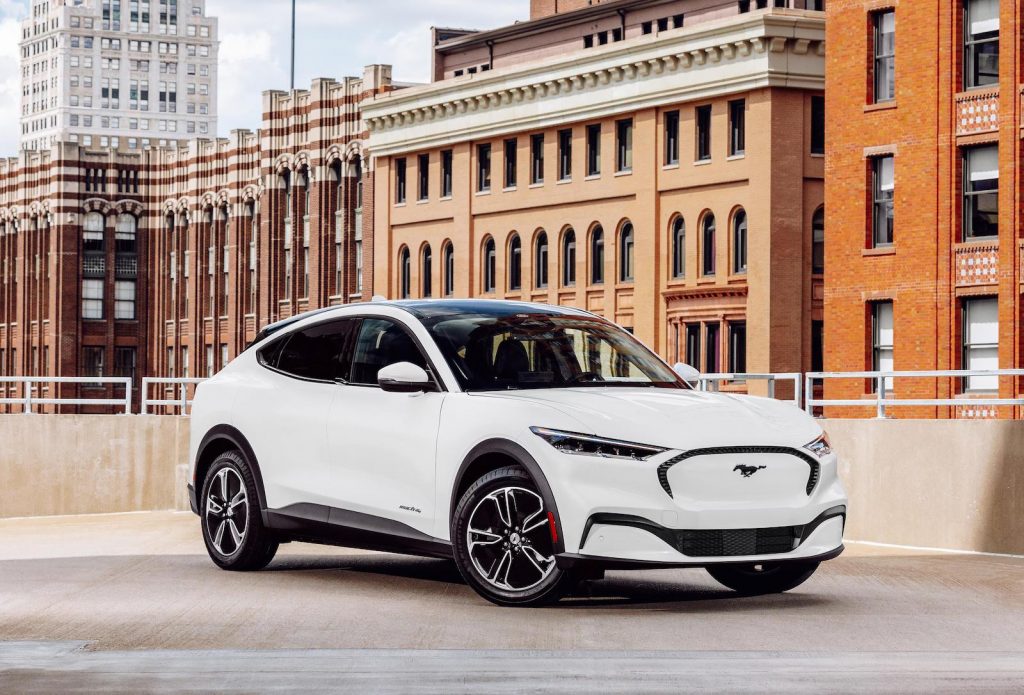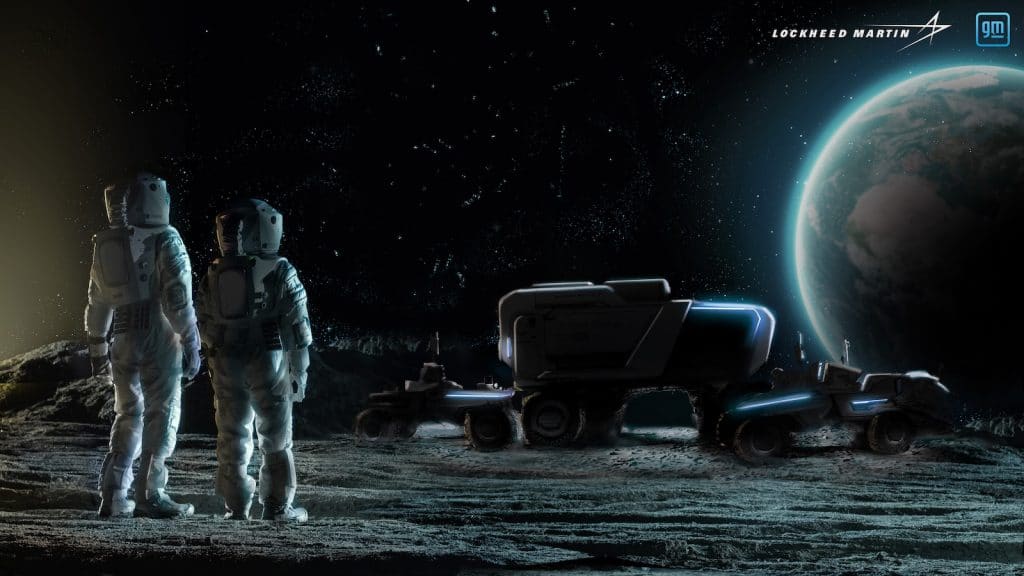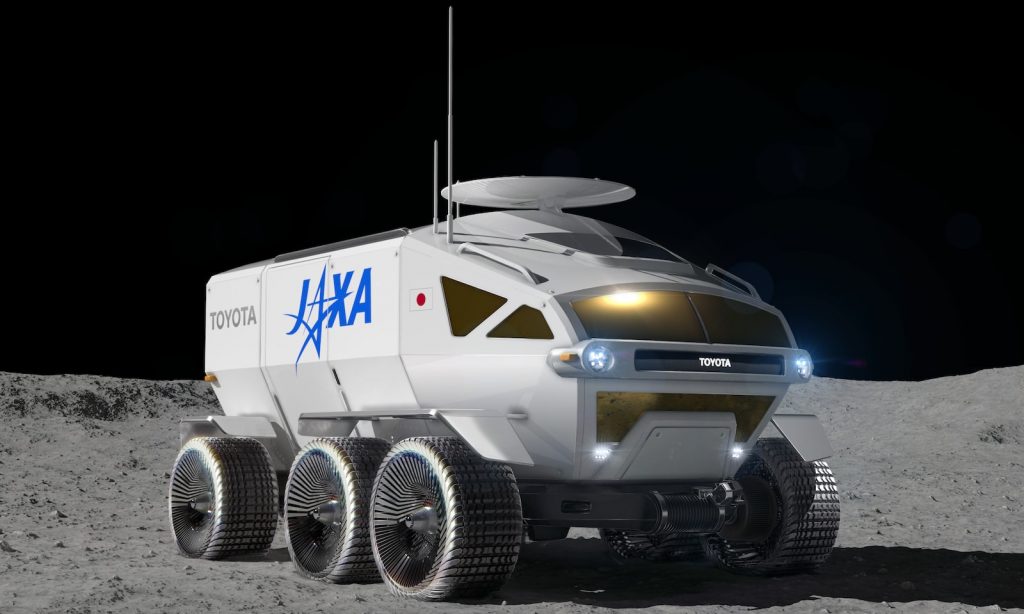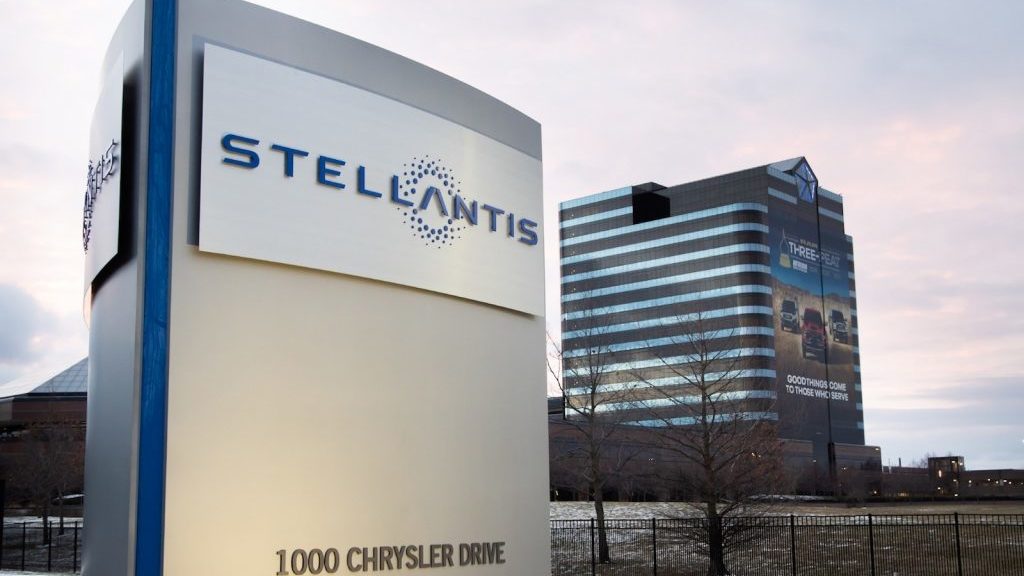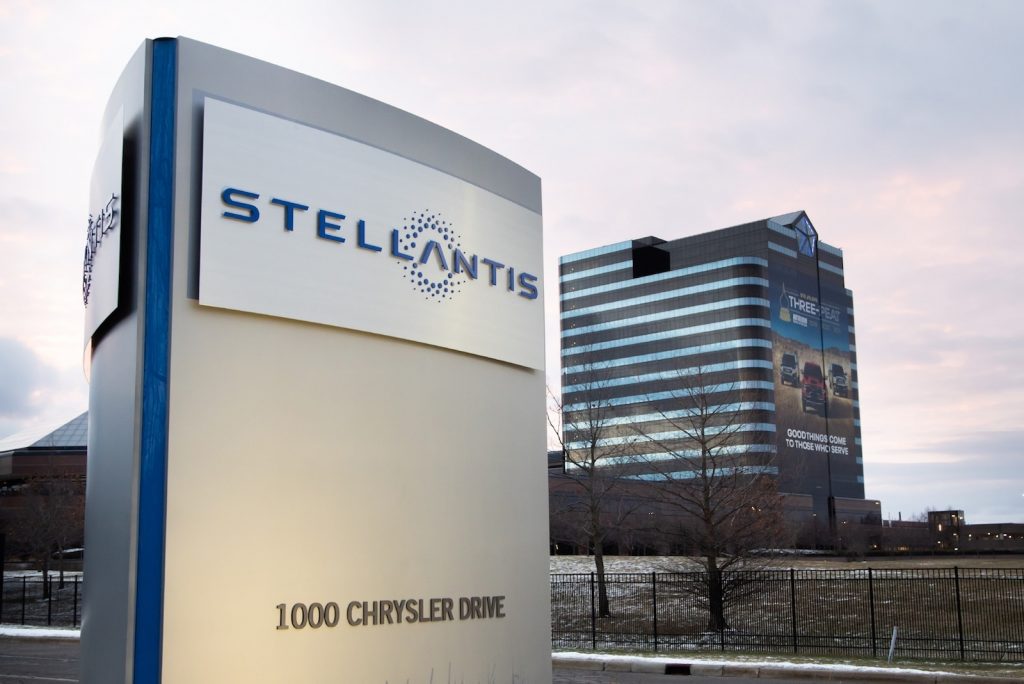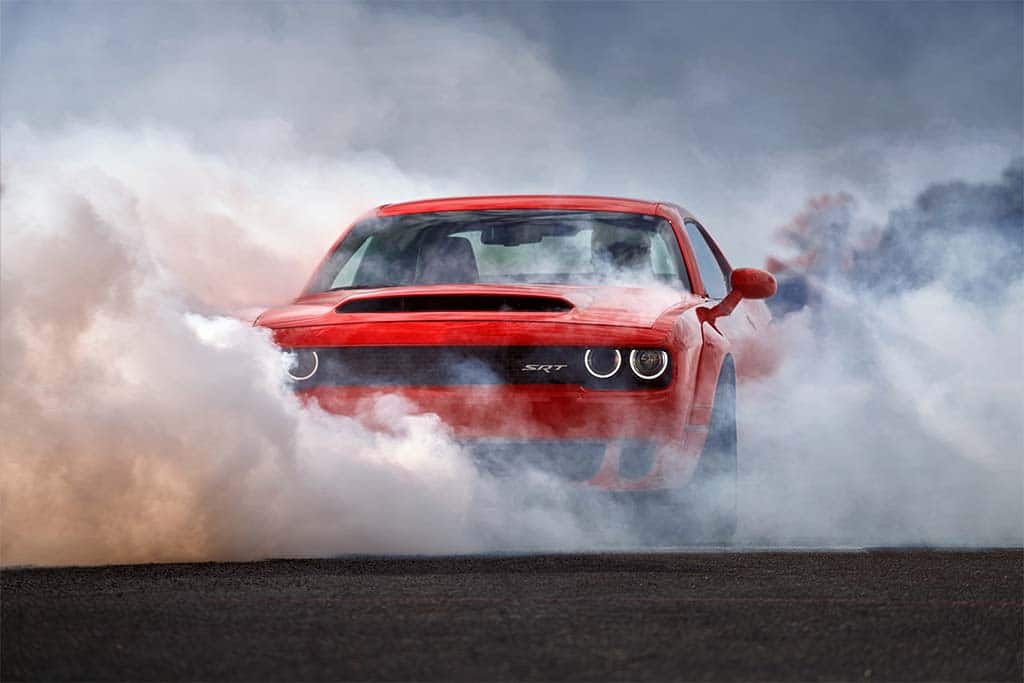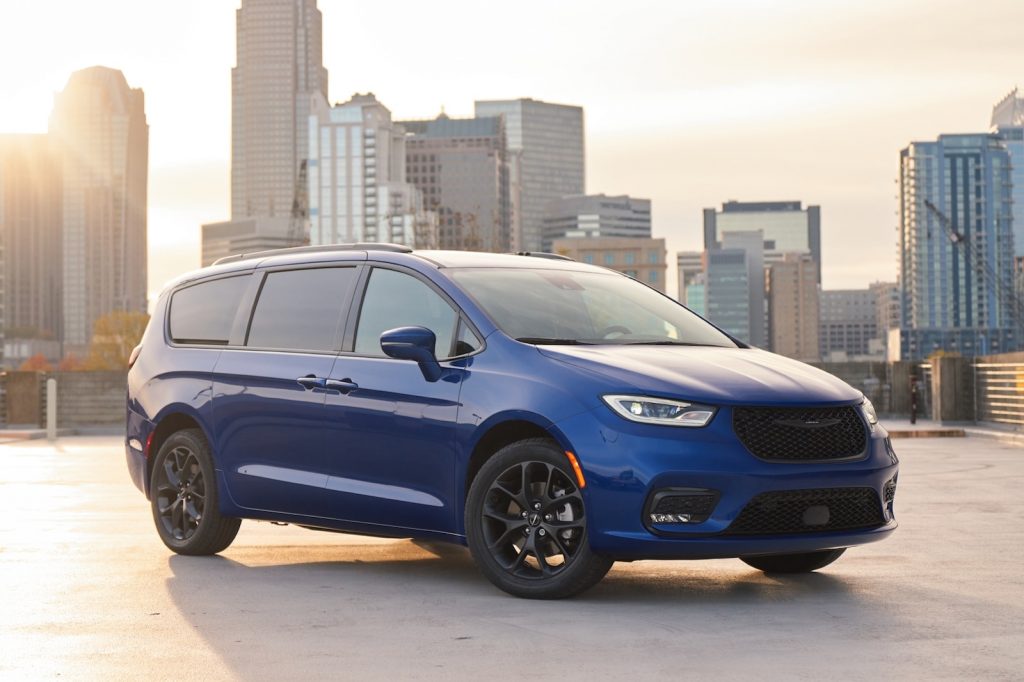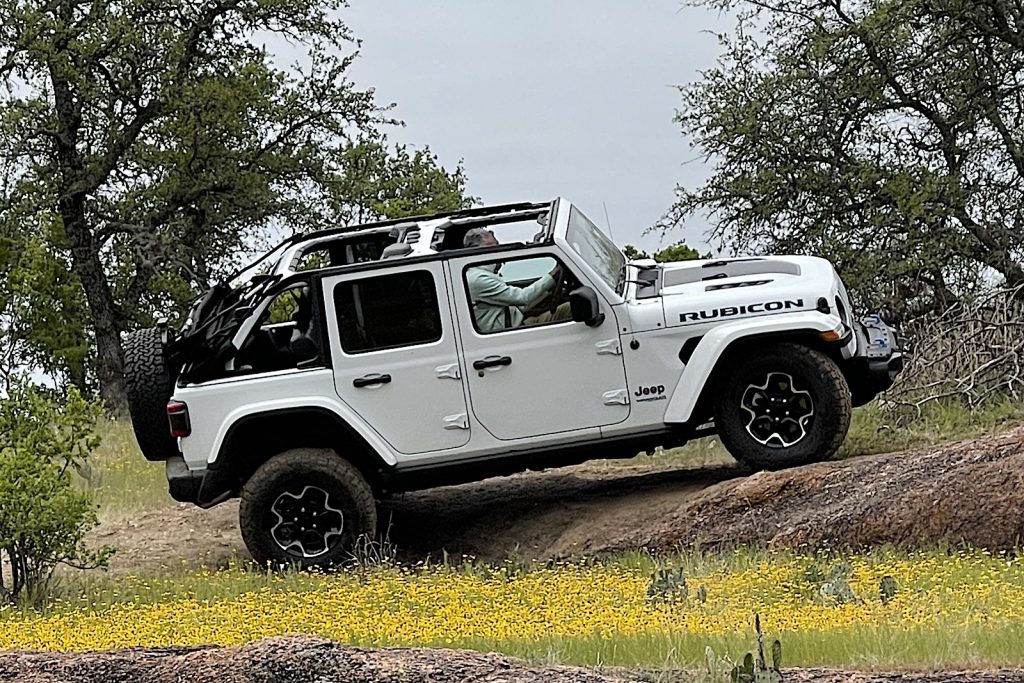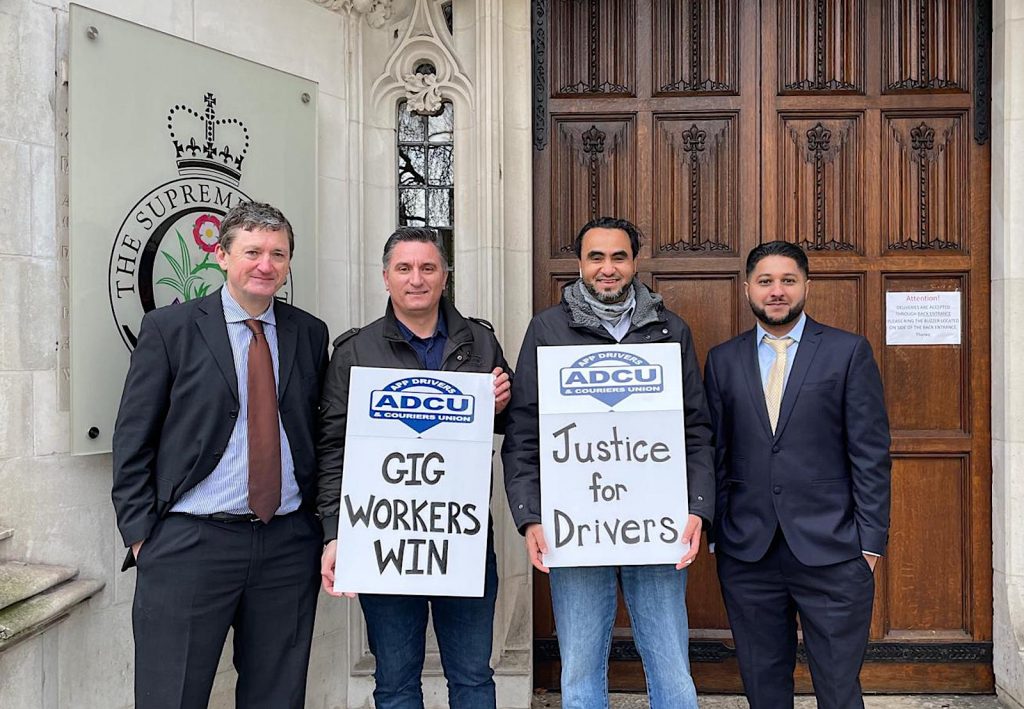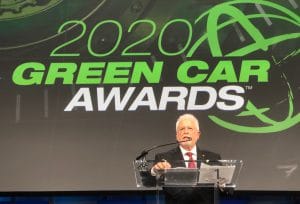
Green Car Journal Publisher Ron Cogan at the 2020 Green Car Awards. He’s been covering the shift to environmentally friendly vehicles for three decades.
The automobile has transformed we live, work and play. Unfortunately, it’s also had a seriously detrimental impact on Planet Earth. And now, as it becomes more crucial to address issues like climate change, the automobile is in the crosshairs.
That’s a message many have come to just lately. Not Ron Cogan. The veteran automotive journalist was among the first to recognize the need to clean up the car, in 1992 launching Green Car Journal. Where some have focused exclusively on electrified vehicles, pure battery-electric models, in particular, Cogan and his magazine have looked at all the various green car technologies that have come — and, in many cases, gone — during the past three decades.
The latest issue of Green Car Journal focuses specifically on battery-electric vehicles. But, as is Cogan’s style, it takes a pragmatic, even somewhat skeptical, look at this potentially game-changing technology, recognizing there are still many challenges to be overcome before BEVs can clearly replace the time-tested internal combustion engine.
Cogan spoke to TheDetroitBureau.com about his years covering the green car world and what he sees coming in the years ahead.
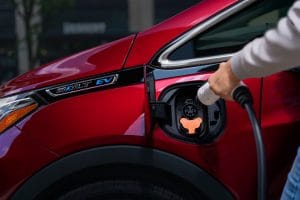
Cogan’s enjoyed a front-row seat, watching and writing about the shift from ICE-powered vehicles to electrified models in the U.S.
TheDetroitBureau: These days, everyone is writing about electric vehicles but you’ve been at this for a long time, haven’t you? And don’t you take something of a broader look when it comes to environmentally friendly vehicles?
Ron Cogan: Green Car Journal, which launched in 1992, has been all about options, everything that’s happening in the green space, whether it’s methanol, ethanol and natural gas, even high fuel-efficiency gasoline. Now, there’s a huge push towards electrification. It wasn’t our call to tell people what to drive. With our 30th birthday coming up we wanted to let people read different opinions from industry leaders.
TDB: We now have General Motors CEO Mary Barra setting a transition to all-electric vehicles and announcing a second battery plant. Is this the year of the tipping point for battery-electric vehicles?
Cogan: I would agree there’s a tipping point going on in the sense that there’s a major commitment by a lot of automakers. It’s gone beyond lip service. For the industry, the tipping point is here. The question is whether it is a consumer tipping point yet. Only so many people are willing to step up to pure electric vehicles. More see a hybrid as the way to go because it’s so seamless, and some to plug-in hybrids. But have we reached a tipping point for consumers? I’m not so sure.
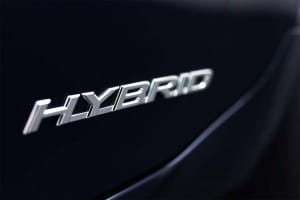
Cogan notes that hybrids provide a level of convenience that pure EVs cannot.
TDB: Yet BEVs do seem to be gaining a lot of momentum.
Cogan: Well, the range issues is being overcome to a large degree, But even with 250 miles, on a long trip you have to plan ahead (to find places to charge), which is why I think plug-in hybrids are going to be pretty huge. When you can’t plug in you’re not limited, so I think that category is really going to expand. With a plug-in you can do everyday driving in electric but switch to internal combustion when you have to go farther. I think it’s a win-win. And it will get more people into buying electric vehicles.
TDB: I find that the best way to promote electric vehicles is to get people into electric vehicles. They’re often surprised by the performance, for one thing.
Cogan: Yeah, today’s electric vehicles are pretty amazing given what they offer — everything a combustion vehicle can offer and more. The launch in an electric vehicle can be pretty exciting and some companies, like Tesla, are keying in on that, talking about how they can beat a Ferrari on track and all that. I think that’s surprising a lot of people.
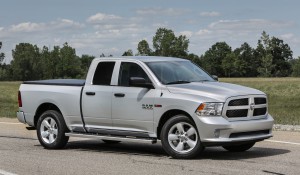
Cogan is quick to note that EVs are not the only way to improve the efficiency of vehicles. His publication’s honored several diesels.
TDB: I have more and more people asking if this is the right time to buy an electric vehicle. Many worry that, like with an iPhone, if they buy today something better will soon come out and they’ll regret it. What would you tell them?
Cogan: The technology, the range, all of that will improve over time, as will the cost which will continue to go down incrementally. So, it’s a tough question. If you find the right vehicle that appeals to you, it makes sense, go ahead and buy the vehicle. There are some great choices out there now and there are going to be more coming up. The jump to 250 miles (which most new BEVs are offering) is huge and there are going to be more and more charging stations coming online. True, the nature of it is that there’s always going to be something better. But do you never buy an electric vehicle because of that?
TDB: Doesn’t that make an argument for leasing, rather than buying? You can move to something newer and better in a few years — and not worry about trade-in values.
Cogan: I think leasing is the ideal way to go with electric vehicles. It means you don’t have to take as much of a risk. You know what your payments are. You know when you’re going to turn it in. And then, you can move on to the next generation of electric vehicles. Leasing takes the risk out.
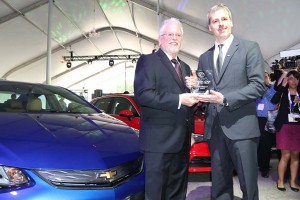
Green Car Publisher Ron Cogan, Chevy Marketing Director Steve Mojoras and the 2016 Volt, which was honored by the Green Car Awards.
TDB: Let’s talk about batteries — in particular, next-generation batteries. Honda, Ford and others are all talking about solid-state batteries (which supposedly will be lighter, deliver longer range and shorter charging times and even reduce the risk of fire). Are they real? And will they live up to expectations?
Cogan: It seems that if solid-state comes close to all the promises it would put BEVs over the top, making all the difference in the world. Solid-state, from what we hear, is the ideal technology.
TDB: What would you estimate will be the BEV share of the market by 2030? And could it be even bigger than people are forecasting now?
Cogan: It’s tough to make a prediction, and I try to avoid that. But automakers and other interests are pushing for them and there’s a lot of interest in setting up a nationwide rapid charging network. All of that takes us in the direction where we know there’s going to be significantly more electric vehicles sold by then. But many things could influence the fate of gasoline vehicles. How’s the price of gas? If gas prices stay low there’ll be less incentive for electric vehicles. Technology will influence things. A recession could, as well. Legislation clearly will have an influence, especially if it’s a disincentive to drive on gasoline.
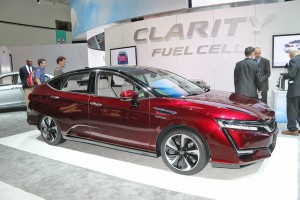
Honda has been at the forefront of fuel-cell vehicles with the Clarity.
TDB: On the subject of politics, the Biden administration wants to have 500,000 charging stations in place by 2030. Could that mean a faster growth rate for electric?
Cogan: If we get the range to drive on battery like you would on gasoline and you have a network of rapid chargers, suddenly, your functionality is increased exponentially. But there’s no way yet to know if the government is going to create (that public charging network). Administrations change. Agendas change. So, I don’t put stock into what you can count on as far as legislation matters.
TDB: But the Biden administration is clearly making a lot of proposals to promote electric vehicles. Do you like what you’re seeing?
Cogan: Yeah, as far as I can tell. I mean, we’re going to see how this all unfolds. This administration has a more proactive agenda for environmental issues in general and clean cars, specifically, than the previous administration. But I have to say you can’t always count on that. Back under the Obama administration, he wanted a million electric vehicles by 2015. It was never going to happen because there weren’t enough vehicles to make it happen. (But) I look at all of these things (Biden is proposing) as positive … a direction that seems to make sense for electrified vehicles.

Cogan drove a GM EV1 for a full year.
TDB: You started publishing Green Car Journal in 1992. Looking back on the last three decades, what were biggest surprises, the things you didn’t count on early on?
Cogan: One of the milestones was the debut of the GM Impact prototype and then the actual production of the GM EV1, I drove one of those for a year. It was an amazing car to be in on the evolution of electric vehicles. It was also interesting to note how hydrogen was big and then (see automakers) backpedaling, Now they’re interested in hydrogen again. It’s gaining momentum again.
One of the (other) things that surprises me is that we’re seeing such a push for electrification, at the extreme high end of both luxury vehicles and sports cars and exotics.
TDB: To wrap up, is the age of the internal combustion engine coming to an end?
Cogan: I don’t think you can discount internal combustion because it keeps getting better and better. And I don’t think you can discount hybrids and plug-in hybrids and focus just on battery-electric vehicles. Those are all a big part of the solution. It may have narrowed from when we started publishing. It’s no longer really about ethanol and natural gas and propane. It’s really about electrification and significantly more efficient internal combustion engines — and a combination of the two. It’s going to be even more exciting in the years ahead seeing how it will play out.
html div#JkaXGWBzgI div#JkaXGWBzgI_inpost.columbine-container { background: #fff; border: 3px solid #91a6bf; -webkit-border-radius: 5px; -moz-border-radius: 5px; border-radius: 5px; margin: 10px auto; text-align: center; width: 100%; padding: 20px 30px; color: #555; -webkit-box-sizing: border-box; -moz-box-sizing: border-box; box-sizing: border-box; } html div#JkaXGWBzgI div#JkaXGWBzgI_inpost.columbine-container div.columbine-miniText { font-size: 1em; line-height: 28px; text-transform: uppercase; color: #54C3A5; font-weight: bold; font-family: ‘Alfa Slab One’, Helvetica, Arial, sans-serif; display:none; } html div#JkaXGWBzgI div#JkaXGWBzgI_inpost.columbine-container div.columbine-heading { font-weight: bold; line-height: 1.5; } html div#JkaXGWBzgI div#JkaXGWBzgI_inpost.columbine-container div.columbine-caption { margin-top: 12px; font-style: italic; font-size: 18px; line-height: 28px; } html div#JkaXGWBzgI div#JkaXGWBzgI_inpost.columbine-container .columbine-form { overflow: hidden; margin-top: 20px; } html div#JkaXGWBzgI div#JkaXGWBzgI_inpost.columbine-container div.columbine-three-col1 { float: left; width: 33.333%; } html div#JkaXGWBzgI div#JkaXGWBzgI_inpost.columbine-container div.columbine-three-col2 { float: left; width: 33.333%; } html div#JkaXGWBzgI div#JkaXGWBzgI_inpost.columbine-container div.columbine-three-col3 { float: left; width: 33.333%; } html div#JkaXGWBzgI div#JkaXGWBzgI_inpost.columbine-container div.columbine-two-col1 { float: left; width: 66.333%; } html div#JkaXGWBzgI div#JkaXGWBzgI_inpost.columbine-container div.columbine-two-col2 { float: right; width: 33.333%; } html div#JkaXGWBzgI div#JkaXGWBzgI_inpost.columbine-container input.columbine-input, html div#JkaXGWBzgI div#JkaXGWBzgI_inpost.columbine-container input.mo-optin-form-custom-field.date-field, html div#JkaXGWBzgI div#JkaXGWBzgI_inpost.columbine-container input.mo-optin-form-custom-field.text-field, html div#JkaXGWBzgI div#JkaXGWBzgI_inpost.columbine-container input.mo-optin-form-custom-field.password-field, html div#JkaXGWBzgI div#JkaXGWBzgI_inpost.columbine-container select.mo-optin-form-custom-field, html div#JkaXGWBzgI div#JkaXGWBzgI_inpost.columbine-container textarea.mo-optin-form-custom-field { background-color: #ffffff; width: 100%; display: block; -webkit-box-sizing: border-box; -moz-box-sizing: border-box; box-sizing: border-box; -webkit-border-radius: 0; -moz-border-radius: 0; border-radius: 0; padding: 11px 17px; font-size: 16px; line-height: 16px; text-align: left; border: 1px solid #ccc; color: #555; outline: none; margin: 0; } html div#JkaXGWBzgI div#JkaXGWBzgI_inpost.columbine-container input.columbine-input, html div#JkaXGWBzgI div#JkaXGWBzgI_inpost.columbine-container input.mo-optin-form-custom-field.date-field, html div#JkaXGWBzgI div#JkaXGWBzgI_inpost.columbine-container input.mo-optin-form-custom-field.text-field, html div#JkaXGWBzgI div#JkaXGWBzgI_inpost.columbine-container input.mo-optin-form-custom-field.password-field, html div#JkaXGWBzgI div#JkaXGWBzgI_inpost.columbine-container textarea.mo-optin-form-custom-field.textarea-field { -webkit-appearance: none; } html div#JkaXGWBzgI div#JkaXGWBzgI_inpost.columbine-container input.columbine-submit, html div#JkaXGWBzgI div#JkaXGWBzgI_inpost.columbine-container input[type=”submit”].mo-optin-form-cta-button { display: block; -webkit-box-sizing: border-box; -moz-box-sizing: border-box; box-sizing: border-box; -webkit-appearance: none; border: 0; background: #54C3A5; padding: 13px 10px; font-size: 16px; line-height: 16px; text-align: center; color: #fff; outline: none; cursor: pointer; font-weight: 700; width: 100%; margin: 0; border-radius: 0; } html div#JkaXGWBzgI div#JkaXGWBzgI_inpost.columbine-container div.columbine-note { margin-top: 10px; line-height: normal; } html div#JkaXGWBzgI div#JkaXGWBzgI_inpost.columbine-container div.mo-optin-error { display: none; background: #FF0000; color: white; text-align: center; padding: .2em; margin: 0; width: 100%; font-size: 16px; -webkit-box-sizing: border-box; -moz-box-sizing: border-box; box-sizing: border-box; border: 1px solid #FF0000; } @media only screen and (max-width: 650px) { html div#JkaXGWBzgI div#JkaXGWBzgI_inpost.columbine-container div.mo-optin-error { margin-bottom: -10px; } html div#JkaXGWBzgI div#JkaXGWBzgI_inpost.columbine-container div.columbine-two-col1, html div#JkaXGWBzgI div#JkaXGWBzgI_inpost.columbine-container div.columbine-two-col2, html div#JkaXGWBzgI div#JkaXGWBzgI_inpost.columbine-container div.columbine-three-col1, html div#JkaXGWBzgI div#JkaXGWBzgI_inpost.columbine-container div.columbine-three-col2, html div#JkaXGWBzgI div#JkaXGWBzgI_inpost.columbine-container div.columbine-three-col3 { float: none; width: 100%; margin-right: 0; margin-top: 10px; } } html div#JkaXGWBzgI.mo-optin-has-custom-field div#JkaXGWBzgI_inpost.columbine-container div.columbine-column, html div#JkaXGWBzgI.mo-optin-has-custom-field div#JkaXGWBzgI_inpost.columbine-container div.columbine-two-col1, html div#JkaXGWBzgI.mo-optin-has-custom-field div#JkaXGWBzgI_inpost.columbine-container div.columbine-two-col2, html div#JkaXGWBzgI.mo-optin-has-custom-field div#JkaXGWBzgI_inpost.columbine-container div.columbine-three-col1, html div#JkaXGWBzgI.mo-optin-has-custom-field div#JkaXGWBzgI_inpost.columbine-container div.columbine-three-col2, html div#JkaXGWBzgI.mo-optin-has-custom-field div#JkaXGWBzgI_inpost.columbine-container div.columbine-three-col3 { float: none; width: 100%; margin-right: 0; margin-top: 10px; } html div#JkaXGWBzgI.mo-optin-has-custom-field div#JkaXGWBzgI_inpost.columbine-container div.columbine-column textarea.mo-optin-form-custom-field.textarea-field { min-height: 80px; }div#JkaXGWBzgI *, div#JkaXGWBzgI *:before, div#JkaXGWBzgI *:after {box-sizing: border-box;-webkit-box-sizing: border-box;-moz-box-sizing: border-box;}div#JkaXGWBzgI_inpost_container div#JkaXGWBzgI_inpost .mo-optin-field:focus {outline:0}div#JkaXGWBzgI_inpost_container div#JkaXGWBzgI_inpost .mo-optin-form-submit-button:focus {outline:0}div#JkaXGWBzgI_inpost_container div.mo-optin-powered-by{margin:5px auto 2px;text-align:center;}div#JkaXGWBzgI_inpost_container div.mo-optin-powered-by a {font-size:16px !important; text-decoration: none !important;box-shadow:none !important;border-bottom-width:0px !important;cursor:pointer !important;}div#JkaXGWBzgI_inpost_container .mo-acceptance-checkbox {background-color: #fff;line-height: 0;border: 1px solid #bbb;width: 16px;min-width: 16px;height: 16px;margin: 0 5px 0 0 !important;outline: 0;text-align: center;vertical-align: middle;clear: none;cursor: pointer;}div#JkaXGWBzgI_inpost_container .mo-acceptance-label {cursor:pointer}div#JkaXGWBzgI_inpost_container div#JkaXGWBzgI_inpost p {padding:0px !important;margin:0px !important}div#JkaXGWBzgI .mo-optin-form-wrapper label {color:inherit;font-weight: normal;margin: 0;padding:0;}div#JkaXGWBzgI div#JkaXGWBzgI_inpost_container div#JkaXGWBzgI_inpost input[type=submit] {-webkit-appearance: none;}div#JkaXGWBzgI div#JkaXGWBzgI_inpost_container div#JkaXGWBzgI_inpost input {z-index: auto;}div#JkaXGWBzgI.mo-cta-button-flag .mo-optin-form-note .mo-acceptance-label {display:none;}div#JkaXGWBzgI .mailoptin-video-container { position: relative; padding-bottom: 56.25%; height: 0; overflow: hidden; } div#JkaXGWBzgI .mailoptin-video-container iframe, div#JkaXGWBzgI .mailoptin-video-container object, div#JkaXGWBzgI .mailoptin-video-container embed, div#JkaXGWBzgI .mailoptin-video-container video { position: absolute; top: 0; left: 0; width: 100%; height: 100%; }html div#JkaXGWBzgI div#JkaXGWBzgI_inpost.mo-optin-form-wrapper {max-width:100% !important}#JkaXGWBzgI .mo-optin-form-container .mo-optin-spinner { border-radius: inherit; position: absolute; width: 100%; height: 100%; background: #fff url(https://www.thedetroitbureau.com/wp-content/plugins/mailoptin/src/core/src/assets/images/spinner.gif) 50% 50% no-repeat; left: 0; top: 0; opacity: 0.99; filter: alpha(opacity=80); } #JkaXGWBzgI .mo-optin-form-container .mo-optin-success-close { font-size: 32px !important; font-family: “HelveticaNeue – Light”, “Helvetica Neue Light”, “Helvetica Neue”, Helvetica, Arial, “Lucida Grande”, sans-serif !important; color: #282828 !important; font-weight: 300 !important; position: absolute !important; top: 0 !important; right: 10px !important; background: none !important; text-decoration: none !important; width: auto !important; height: auto !important; display: block !important; line-height: 32px !important; padding: 0 !important; -moz-box-shadow: none !important; -webkit-box-shadow: none !important; box-shadow: none !important; } #JkaXGWBzgI .mo-optin-form-container .mo-optin-form-wrapper .mo-optin-success-msg { font-size: 21px; font-family: “HelveticaNeue – Light”, “Helvetica Neue Light”, “Helvetica Neue”, Helvetica, Arial, “Lucida Grande”, sans-serif; color: #282828 !important; font-weight: 300; text-align: center; margin: 0 auto; width: 100%; position: absolute !important; left: 50%; top: 50%; -webkit-transform: translate(-50%, -50%); -moz-transform: translate(-50%, -50%); -o-transform: translate(-50%, -50%); -ms-transform: translate(-50%, -50%); transform: translate(-50%, -50%); } #JkaXGWBzgI .mo-optin-form-container .mo-optin-form-wrapper .mo-optin-success-msg a { color: #0000EE; text-decoration: underline; } html div#JkaXGWBzgI .mo-optin-form-container .mo-optin-form-wrapper .mo-optin-fields-wrapper .list_subscription-field:not(select), html div#JkaXGWBzgI .mo-optin-form-container .mo-optin-form-wrapper .mo-optin-fields-wrapper .checkbox-field, html div#JkaXGWBzgI .mo-optin-form-container .mo-optin-form-wrapper .mo-optin-fields-wrapper .radio-field, html div#JkaXGWBzgI .mo-optin-form-container .mo-optin-form-wrapper .mo-optin-fields-wrapper .select-field { margin-top: 6px; } html div#JkaXGWBzgI .mo-optin-form-container .mo-optin-form-wrapper .mo-optin-fields-wrapper .checkbox-field, html div#JkaXGWBzgI .mo-optin-form-container .mo-optin-form-wrapper .mo-optin-fields-wrapper .radio-field, html div#JkaXGWBzgI .mo-optin-form-container .mo-optin-form-wrapper .mo-optin-fields-wrapper .select-field { text-align: left; padding: 6px; } html div#JkaXGWBzgI .mo-optin-form-container .mo-optin-form-wrapper .mo-optin-fields-wrapper .checkbox-field label, html div#JkaXGWBzgI .mo-optin-form-container .mo-optin-form-wrapper .mo-optin-fields-wrapper .radio-field label { display: block; text-align: left; margin-top: 6px; } html div#JkaXGWBzgI .mo-optin-form-container .mo-optin-form-wrapper .mo-optin-fields-wrapper .checkbox-field label input, html div#JkaXGWBzgI .mo-optin-form-container .mo-optin-form-wrapper .mo-optin-fields-wrapper .radio-field label input { margin-right: 5px; vertical-align: middle; } html div#JkaXGWBzgI .mo-optin-form-container .mo-optin-form-wrapper .mo-optin-fields-wrapper .select-field select { width: 100%; } html div#JkaXGWBzgI div#JkaXGWBzgI_inpost .mo-optin-fields-wrapper .list_subscription-field:not(select), html div#JkaXGWBzgI div#JkaXGWBzgI_inpost .mo-optin-fields-wrapper .mo-optin-form-custom-field.checkbox-field, html div#JkaXGWBzgI div#JkaXGWBzgI_inpost .mo-optin-fields-wrapper .mo-optin-form-custom-field.radio-field { padding: 0 !important; border: 0 !important; background: transparent !important; } html div#JkaXGWBzgI .mo-optin-form-container .mo-optin-form-wrapper .mo-optin-fields-wrapper .list_subscription-field label { display: block !important; margin: 5px 0 !important; } html div#JkaXGWBzgI .mo-optin-form-container .mo-optin-form-wrapper .mo-optin-fields-wrapper .list_subscription-field label:last-child { margin: 0; } html div#JkaXGWBzgI .mo-optin-form-container .mo-optin-form-wrapper .mo-optin-fields-wrapper .list_subscription-field input[type=checkbox] { cursor: pointer; } div#JkaXGWBzgI div#JkaXGWBzgI_inpost .mo-optin-form-headline, div#JkaXGWBzgI div.mo-optin-form-container h2, div#JkaXGWBzgI div.mo-optin-form-container h1 { font-size: 32px !important; }div#JkaXGWBzgI div#JkaXGWBzgI_inpost .mo-optin-form-description, div#JkaXGWBzgI div.mo-optin-form-container div#JkaXGWBzgI_inpost p { font-size: 18px !important; }div#JkaXGWBzgI div#JkaXGWBzgI_inpost .mo-optin-form-note { font-size: 14px !important; }@media screen and (max-width: 768px) { div#JkaXGWBzgI div#JkaXGWBzgI_inpost .mo-optin-form-headline, div#JkaXGWBzgI div.mo-optin-form-container div#JkaXGWBzgI_inpost h2, div#JkaXGWBzgI div.mo-optin-form-container div#JkaXGWBzgI_inpost h1 { font-size: 30px !important; } div#JkaXGWBzgI div#JkaXGWBzgI_inpost .mo-optin-form-description, div#JkaXGWBzgI div.mo-optin-form-container div#JkaXGWBzgI_inpost p { font-size: 18px !important; } div#JkaXGWBzgI div#JkaXGWBzgI_inpost .mo-optin-form-note { font-size: 14px !important; } }@media screen and (max-width: 480px) { div#JkaXGWBzgI div#JkaXGWBzgI_inpost .mo-optin-form-headline, div#JkaXGWBzgI div.mo-optin-form-container div#JkaXGWBzgI_inpost h2, div#JkaXGWBzgI div.mo-optin-form-container div#JkaXGWBzgI_inpost h1 { font-size: 25px !important; } div#JkaXGWBzgI div#JkaXGWBzgI_inpost .mo-optin-form-description, div#JkaXGWBzgI div.mo-optin-form-container div#JkaXGWBzgI_inpost p { font-size: 16px !important; } div#JkaXGWBzgI div#JkaXGWBzgI_inpost .mo-optin-form-note, div#JkaXGWBzgI div#JkaXGWBzgI_inpost .mo-optin-form-note * { font-size: 12px !important; } } #JkaXGWBzgI #JkaXGWBzgI_inpost .mo-optin-field.mo-optin-form-name-field::-webkit-input-placeholder { color: #555555 !important; } #JkaXGWBzgI #JkaXGWBzgI_inpost .mo-optin-field.mo-optin-form-name-field:-ms-input-placeholder { color: #555555 !important; } #JkaXGWBzgI #JkaXGWBzgI_inpost .mo-optin-field.mo-optin-form-name-field::placeholder { color: #555555 !important; } #JkaXGWBzgI #JkaXGWBzgI_inpost .mo-optin-field.mo-optin-form-email-field::-webkit-input-placeholder { color: #555555 !important; } #JkaXGWBzgI #JkaXGWBzgI_inpost .mo-optin-field.mo-optin-form-email-field:-ms-input-placeholder { color: #555555 !important; } #JkaXGWBzgI #JkaXGWBzgI_inpost .mo-optin-field.mo-optin-form-email-field::placeholder { color: #555555 !important; } div#JkaXGWBzgI .mo-mailchimp-interest-container { margin: 0 10px 2px; } div#JkaXGWBzgI .mo-mailchimp-interest-label { font-size: 16px; margin: 5px 0 2px; } div#JkaXGWBzgI input.mo-mailchimp-interest-choice { line-height: normal; border: 0; margin: 0 5px; } div#JkaXGWBzgI span.mo-mailchimp-choice-label { vertical-align: middle; font-size: 14px; } div#JkaXGWBzgI .mo-mailchimp-interest-choice-container { margin: 5px 0; }div#JkaXGWBzgI .mo-mailchimp-interest-label { display:inline-block!important; } div#JkaXGWBzgI span.mo-mailchimp-choice-label { vertical-align:baseline!important; } div#JkaXGWBzgI .mo-mailchimp-interest-container { padding:18px 0 6px 0; } div#JkaXGWBzgI .mo-mailchimp-choice-label { font-size:16px!important; }
